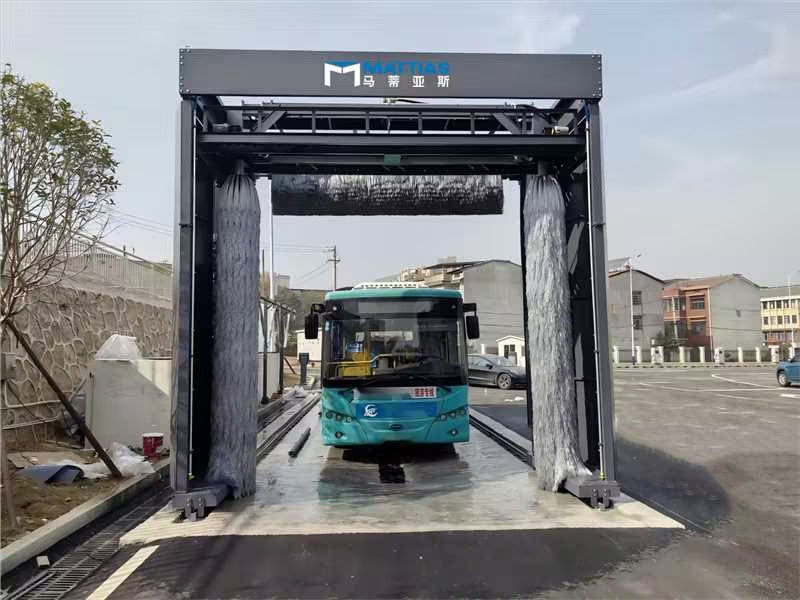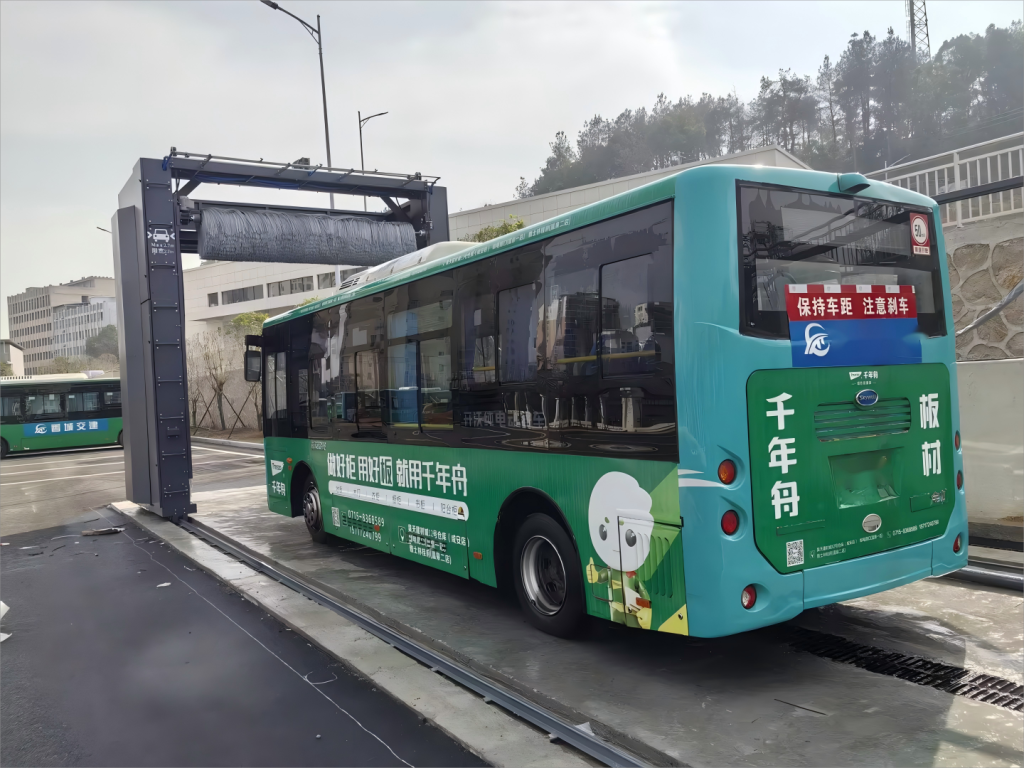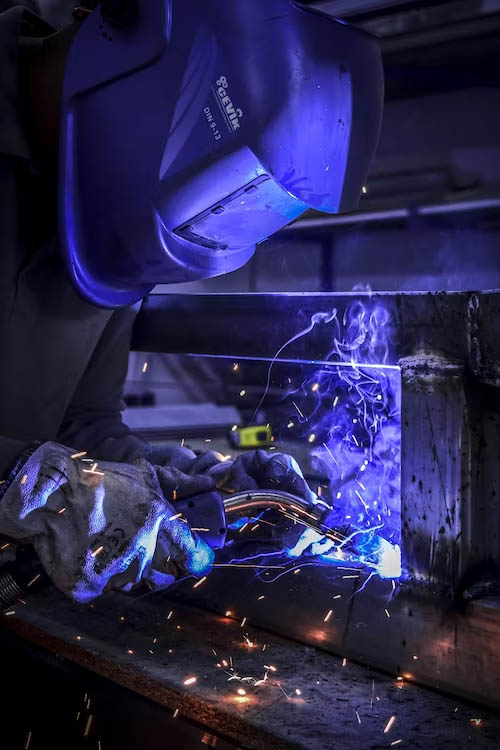In the transportation industry, maintaining cleanliness for buses and trucks is not merely about aesthetics—it is a critical operational requirement. Heavy vehicle wash systems, ranging from automatic gantry car wash machines to advanced chemical dispensers, represent significant capital investments. Ensuring their optimal performance and longevity hinges on a disciplined, regular maintenance regimen. This article explores seven key pillars underpinning the importance of bus wash machine and truck washing equipment maintenance, emphasizing how proactive care safeguards investments, enhances efficiency, and aligns with broader business and environmental goals.
1. Equipment Longevity: Protecting Your Investment
Heavy-duty wash systems, such as the M-BS0000Y touchless car wash machine (capable of handling buses and trucks up to 12,000 mm in length), are engineered for durability but require systematic upkeep to mitigate wear and tear. Components like high-pressure nozzles, conveyor belts, and chemical mixing systems degrade over time due to constant exposure to water, detergents, and mechanical stress.
Regular maintenance tasks—such as lubricating moving parts, inspecting seals for leaks, and replacing worn-out nozzles—prevent catastrophic failures. For example, the embedded anti-freeze systems in advanced wash equipment can malfunction if sediment accumulates in water lines, leading to costly repairs during winter. By adhering to manufacturer-recommended service intervals, operators extend equipment lifespans by 20–30%, effectively protecting their initial investment of 13,500–13,500–42,000 per unit.

2. Optimal Efficiency: Preventing Costly Downtime
Unplanned downtime is a profitability killer. A single malfunction in a fully automatic car wash system can halt operations for hours, disrupting fleet schedules and incurring labor costs for manual cleaning. Proactive maintenance ensures components like the 7–12 MPa high-pressure pumps and computer-controlled drying systems operate at peak efficiency.
Studies on industrial equipment highlight that optimal efficiency is achieved through routine calibration. For instance, adjusting the chemical dosing systems to dispense precise volumes (7–12 mL per vehicle) minimizes waste while maintaining cleaning efficacy. Similarly, cleaning or replacing clogged filters in water recycling units prevents pressure drops, ensuring consistent wash quality. These measures reduce energy consumption by 15–20%, as seen in systems with 22 kW maximum power ratings.

3. Quality Wash Results: Maximizing Chemical Efficiency
Chemical agents are central to removing grease, road salt, and contaminants. However, improper maintenance of dispensers leads to overuse or underuse of detergents. The Mattias intelligent chemical mixing system, for example, relies on calibrated sensors to blend solutions accurately. Neglecting sensor calibration can result in a 30% increase in chemical costs or subpar cleaning, necessitating repeat washes.
Regularly testing water pH levels and detergent concentrations ensures compatibility with vehicle surfaces. This is particularly vital for fleets with specialized coatings or decals. Furthermore, maintaining nozzle alignment prevents uneven spray patterns, which waste chemicals and leave residues. Operators report a 25% improvement in detergent efficiency after quarterly system audits.

4. Reduced Costs: Boosting Profitability
Preventive maintenance is far cheaper than reactive repairs. A single hydraulic pump failure in a gantry-style wash system can cost upwards of 3,000 to replace, not including labor. In contrast, scheduled inspections and part replacements (e.g.,280–$320 for infrared drying lamps) keep marginal costs predictable.
Water and energy savings further enhance profitability. Systems with 0.65–0.75 kWh per wash ratings achieve lower utility bills when pumps and heaters are well-maintained. Additionally, extending equipment life delays capital expenditures. For a mid-sized fleet washing 50 vehicles daily, a 10% reduction in annual maintenance costs translates to 15,000–15,000–20,000 in retained profits.
5. Regulatory Adherence: Meeting Environmental Standards
Environmental regulations mandate responsible water usage and wastewater disposal. Modern wash systems, such as those with 165-liter-per-vehicle water consumption ratings, often integrate recycling technologies. However, clogged filters or malfunctioning reclaim systems can cause non-compliance. For instance, oil-water separators require monthly cleaning to prevent hazardous runoff.
Regular maintenance also ensures adherence to occupational safety standards. Inspecting digital voice safety alarms and emergency stop mechanisms protects technicians from high-pressure hazards. In Australia, compliance with the Water Efficiency Labelling and Standards Act is non-negotiable; well-maintained equipment avoids fines and supports corporate sustainability goals.
6. Seasonal Adjustments: Adapting to Climate Challenges
Seasonality profoundly impacts wash operations. In winter, anti-freeze systems must be tested to prevent pipe bursts, while summer demands higher water pressure to combat dust buildup. For example, adjusting nozzle spray angles in rainy seasons improves drying efficiency, reducing the risk of water spots.
In regions with heavy snowfall, pre-winter inspections of heating elements (e.g., infrared curing lamps) ensure timely defrosting of vehicle surfaces. Conversely, arid climates necessitate more frequent filter changes to handle sand and particulate matter. Such adjustments, guided by maintenance logs, optimize performance year-round.
7. Expert Technicians: Nationwide Service Reliability
Complex systems like the MATTIAS car wash equipment demand specialized knowledge. Partnering with certified technicians ensures accurate diagnostics and repairs. For instance, recalibrating a vehicle suspension tester requires proprietary software and training.
Australia-wide service networks offer rapid response times, minimizing downtime. Providers with 100% on-time delivery rates and ≤24-hour response windows guarantee continuity for fleets operating across vast geographies. Training in-house staff on basic troubleshooting—such as resetting control panels or clearing sensor errors—complements professional services.
Conclusion
Regular maintenance is the linchpin of operational excellence for heavy vehicle wash systems. By prioritizing equipment longevity, efficiency, and regulatory compliance, businesses safeguard their investments and enhance profitability. Seasonal adaptations and access to expert technicians further solidify reliability. In an industry where cleanliness correlates with safety and brand reputation, a disciplined maintenance strategy is not optional—it is essential.



